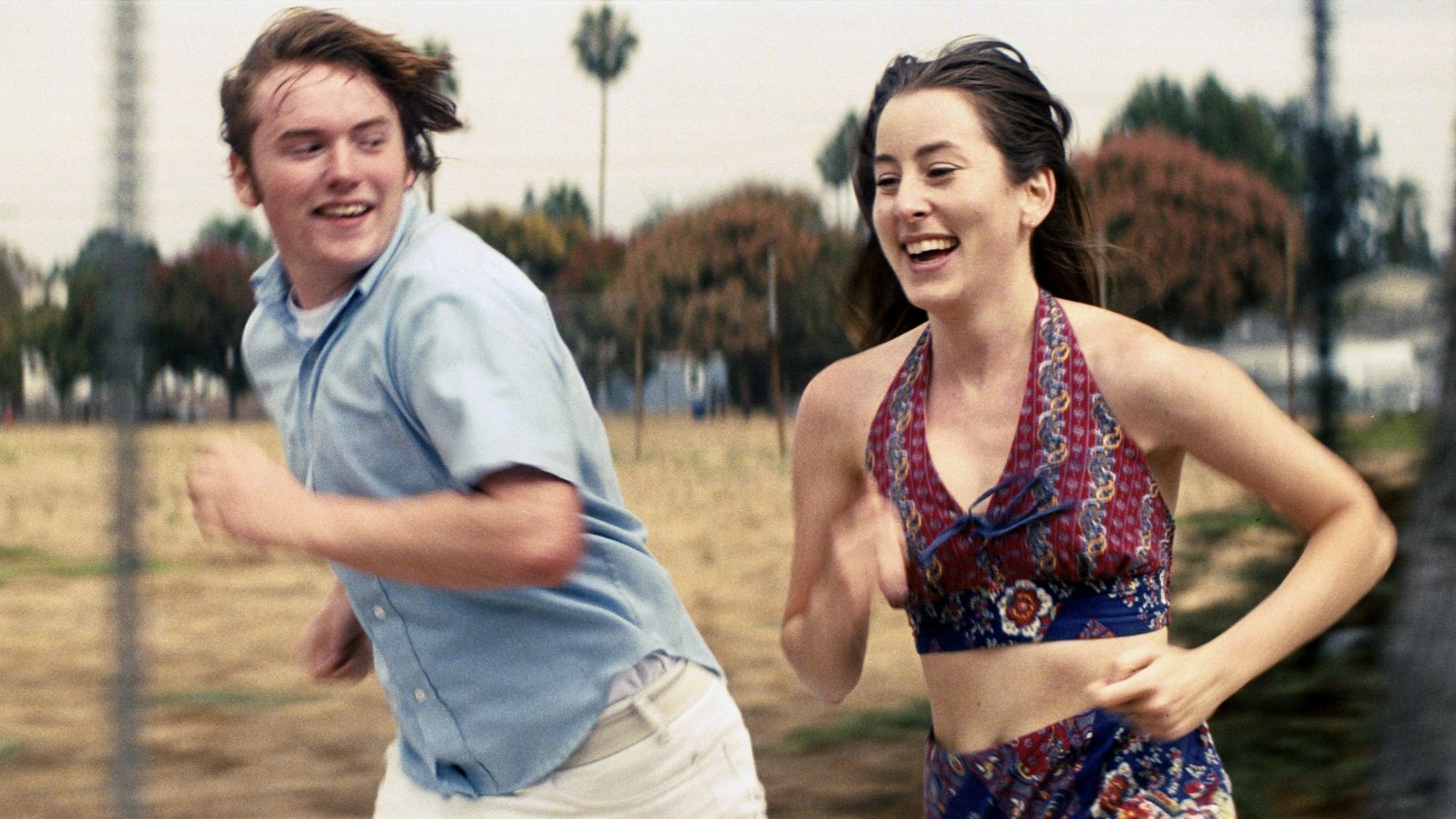Licorice Pizza (2021): A Movie Review
A funny, bold, and adventurous coming-of-age story concerning oddballs in California, 1973.

Paul Thomas Anderson is a director of unusual creative versatility. He tends to go in radically different directions with each movie, so you never quite know what you’ll get. This element of surprise is part of the fun of going to see his movies. I avoid watching trailers, and rarely read reviews, before making a trip to see the latest PTA film.
Licorice Pizza is full of surprises. It’s a coming-of-age romantic drama set in 1973, the San Fernando valley, Los Angeles. In broad terms, it’s about oddballs. Teenage oddballs, young adult oddballs, old adult oddballs. Some would rather be “normal” but they can’t, some are accepted as “normal” when they aren’t, and some are content being oddballs.
Sexuality is a big narrative theme, more than any Anderson movie since Boogie Nights (1997). It's a story that explores around the edges of traditional sexual relationships, and what is culturally accepted, in different ways.
Anderson usually constructs “big” film worlds (Punch Drunk Love (2002) being a notable exception), and this one is giant. It contains a universe crammed with so many striking moments, cameos, details, and lines that I had to see it twice before I felt confident in capturing it well enough to review. It’s richly detailed, dense in cultural references, boldly styled, and ballsy in how it approaches culturally-sensitive subjects. It paints a colourful portrait of US culture in the early 1970s. It sits comfortably next to Richard Linklater’s iconic coming-of-age drama, Dazed and Confused (1993) , as a wistful and joyful meditation on that decade.
Parallels can be drawn to peer auteur-director Quentin Tarantino's last movie, Once Upon a Time in Hollywood (2019). The careers of both directors closely overlap one another, but their films have rarely had much in common thematically. This time, they do. Both deliver bittersweet, nostalgic depictions of L.A., looking back on bygone decades without sugar coating. One or two performances in Licorice Pizza bring to mind ones in Tarantino’s movie. Characters cut from the same cloth.
Both films are also about transitions. In Once Upon a Time, it’s the transition between two cultural ages, as the Golden Age of Hollywood and what it represents is swept away by the hippie movement and New Hollywood. In Licorice Pizza, we are in the strange cultural afterglow following the death of the hippie movement, and the transitions are individual ones. Characters growing and gaining life experience, in transition to adulthood. Minds obsessed by the future, and how to shape it.
The story has a free-wheeling, adventurous, chaotic energy. Every shot seems to open a new door, and offer a new glimpse of the life and culture that surrounds Alana and Gary. It’s a weird, fun, scary, rolling bombardment that makes you feel like you’re seeing everything through fresh eyes and discovering the world with them. A great approach for a coming-of-age drama. The world is one of legalised pinball, the curiously perplexing promise of water beds, tight white disco suits, flares, heavy-handed police enforcement, and political turbulence during the first Nixon presidency.
The photography is stunningly good — which is pretty much guaranteed in Anderson movies. What stands out most, for me, is how highly creative each composition is, without feeling overtly showy or artsy. Many directors play a big hand in the photography, but Anderson actually puts his name in the credits as a Co-director of Photography. It’s clear that he works closely with the camera and in shaping the style of the image. That image has a personally creative feel, is highly cinematic, and is always visually interesting. For my money, it’s as enjoyable and impressive as cinematography gets — at least, without the help of spaceships or exotic landscapes.
The movie is brazenly funny. Some jokes push buttons of political correctness, as if to challenge the viewer: cringe, or laugh? Anderson thrills in this kind of scenario. He prefers not to let the viewer get comfortable — he would rather provoke them and make them question themself. It’s a bold way of engaging the audience, and I think a good one.
Sexuality is a big theme, explored around the edges of what is culturally accepted. The main relationship between Alana Kane (Alana Haim) and Gary Valentine (Cooper Hoffman) is that of a twenty-eight-year-old woman (who also gives twenty-five as her age, so it’s a little murky) with a fifteen-year-old boy. It’s a flirtatious friendship with elements of sexual attraction and romance, though it feels largely platonic. It pushes the viewer's buttons, again challenging them.
On first viewing, in the first act, I found the portrayed age difference and sexual chemistry a bit queasy — like a potentially sexually predatory relationship with reversed gender roles to make it more palatable. Others have made the same reading. We bring ourselves, and our experiences, with us to the cinema, and this perception will likely vary from viewer to viewer.
As the story progresses, a fuller context comes into view. Questions of sexual predation feel written into the narrative on purpose. Designed to make the viewer think about this particular relationship — primarily driven by a platonic and protective love, and a connection of personalities. It uses the relationship of Alana and Gary, which is really about two people attracted in the sense of being drawn to each other, to compare to other relationships that are culturally frowned upon (or not).
Alana has paranoia about the age difference between her and Gary. She is trailed by a mysterious man who appears to be making investigations, and worries about the age gap between her and Gary out loud with a friend. The age difference is inappropriate, and that is written into the film — which is an important part of its portrayal. It doesn’t seek to normalise it, but rather asks, “wait — isn’t this weird?” while at the same time showing the platonic attraction that drives it, and how Gary and Alana spend their time together, making it tricky to put neatly in a box. Again, the viewer is skilfully positioned on a knife edge: okay, or not?
A counterpoint to the relationship of Gary and Alana is older men in positions of wealth and power — parts played memorably by Sean Penn and Bradley Cooper (who is hilariously deranged and brilliant in his role) —, who attempt to hook up with Alana purely for sexual gratification, or as an ego prize. These men have no interest in forming a connection with Alana, and place no worth on her as a person — she is simply a sexual or egoic pursuit in this context. They use deception and manipulation as a means to an end.
The contrast highlights lack of vigilance towards relationships where older, privileged men prey on much younger women using forceful, manipulative, or deceptive tactics. It shows an imbalance, where this kind of predation goes largely free from criticism, or is championed. And unlike Alana, the older, privileged men are shown to have no guilt or shame. The relationship between Gary and Alana becomes a kind of set up to make the audience question the second kind of behaviour, too. As if asking “wait — this is weirder, then, right?”
A third relationship that plays on the theme of sexuality and cultural acceptance is a gay politician who is in the closet. He cautiously dines with his partner, calling Alana (who works in his office) in as a front when his partner argues with him in the public setting. The politician deflects abuse onto his partner - who has a more identifiably "camp" demeanour, and no interest in living in the closet (other than to comply with his partner's wishes). His partner becomes the brunt of the societal homophobia directed at both of them - he is both gentle and honest, and does not play along with the charade, which means he takes all the hits. He identifies with Alana, and curses men for all being shits.
Sexuality is one of the biggest themes, and the comparisons drawn between these scenarios are surprisingly thoughtful, while underscored with a humourous spirit. Take in the movie as a whole, though, and it’s much more than a commentary on sexuality. It is also concerned with building a dense galaxy of cultural elements that add up to a big, colourful picture of life at one of its most formative phases, during one of the most interesting moments of popular culture in recent US history. The movie captures a kind of youthful joy combined with an eagerness to get past youth and into adulthood. An impatience for the future combined with a fear of what it could bring, and what might get lost in the vortex of change.
The movie is challenging, brave, fun, often hilarious, adventurous storytelling. It contrasts dramatically against Paul Thomas Anderson's last movie (the excellent Phantom Thread (2017)), delivering his usual, welcome element of surprise. I hope to preserve that element of surprise by leaving most details of the fantastic plot, and the sprawling cast of memorable characters, to be discovered in the movie theatre.
James Lanternman writes movie reviews, essays, and moonlit thoughts. You can reach him at [email protected].
Previously… King Richard (2021): A Movie Review
